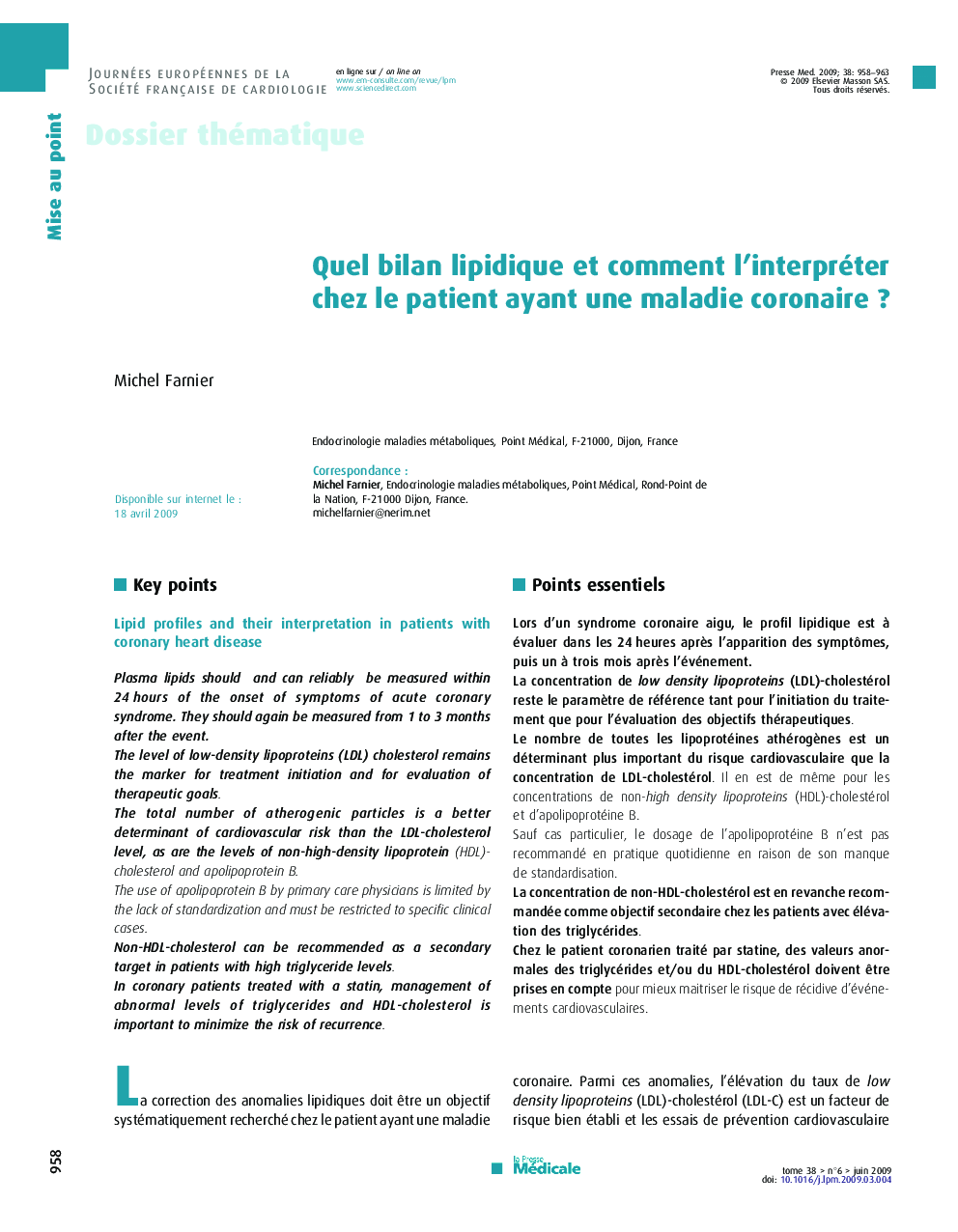| Article ID | Journal | Published Year | Pages | File Type |
|---|---|---|---|---|
| 3819639 | La Presse Médicale | 2009 | 6 Pages |
Points essentielsLors d’un syndrome coronaire aigu, le profil lipidique est à évaluer dans les 24 heures après l’apparition des symptômes, puis un à trois mois après l’événement.La concentration delow density lipoproteins(LDL)-cholestérol reste le paramètre de référence tant pour l’initiation du traitement que pour l’évaluation des objectifs thérapeutiques.Le nombre de toutes les lipoprotéines athérogènes est un déterminant plus important du risque cardiovasculaire que la concentration de LDL-cholestérol. Il en est de même pour les concentrations de non-high density lipoproteins (HDL)-cholestérol et d’apolipoprotéine B.Sauf cas particulier, le dosage de l’apolipoprotéine B n’est pas recommandé en pratique quotidienne en raison de son manque de standardisation.La concentration de non-HDL-cholestérol est en revanche recommandée comme objectif secondaire chez les patients avec élévation des triglycérides.Chez le patient coronarien traité par statine, des valeurs anormales des triglycérides et/ou du HDL-cholestérol doivent être prises en compte pour mieux maitriser le risque de récidive d’événements cardiovasculaires.
Key pointsPlasma lipids should — and can reliably — be measured within 24 hours of the onset of symptoms of acute coronary syndrome. They should again be measured from 1 to 3 months after the event.The level oflow-density lipoproteins(LDL) cholesterol remains the marker for treatment initiation and for evaluation of therapeutic goals.The total number of atherogenic particles is a better determinant of cardiovascular risk than the LDL-cholesterol level, as are the levels of non-high-density lipoprotein (HDL)-cholesterol and apolipoprotein B.The use of apolipoprotein B by primary care physicians is limited by the lack of standardization and must be restricted to specific clinical cases.Non-HDL-cholesterol can be recommended as a secondary target in patients with high triglyceride levels.In coronary patients treated with a statin, management of abnormal levels of triglycerides and HDL-cholesterol is important to minimize the risk of recurrence.
